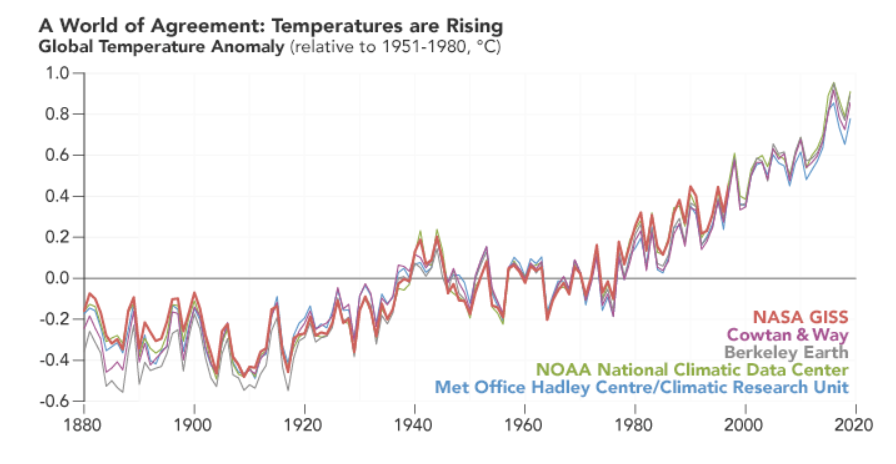CO2 sequestered since 2005
Net Zero is a desired state that refers to an eventual balance between the amount of Greenhouse Gases (GHGs) emitted into the atmosphere and the amount that has been removed. In order to reach this state it will be necessary for businesses, organisations and individual citizens to reduce their own Carbon Footprints (CFPs) through energy efficiency measures, the switching to resources of renewable energy such as those from wind and solar, and other new emerging technologies. Those emissions that cannot be eliminated are balanced by removal out of the atmosphere into what are called ‘Carbon Sinks’.
Many natural ecosystems such as the Seas and the Forests act as GHG storage mechanisms, but left alone they will take millennia to create a new balance even if anthropogenic emissions were to end today, which of course they will not.
Gross Zero would mean stopping all emissions immediately, which is not realistically attainable across all sectors of our lives and the industrial processes that support us.
The term Net Zero is important because – for Carbon Dioxide emissions at least – this is the state at which Global Warming would stop. The Paris Agreement , which has been accepted by over 190 Nation States, underlines the absolute need for Net Zero, requiring states to ‘achieve a balance between anthropogenic emissions by sources and removals by sinks of greenhouse gases in the second half of this century’, in other words by the year 2050. This date has been set in an attempt to limit global warming to a temperature rise of no more that 1.5 degrees C above what is was at the start of the Industrial Revolution on Earth.
The graph here shows the current trend of temperature increases according to 4 independent climate research organisations

It will require a consensus of action by all of the Nations of the Earth to prevent a temperature rise to 3 C or even more by the end of this century.
The very future of Civilisations now depends on the actions that we take today, but even in 50 years, and a common approach is needed to increase our chances of success.
It is now universally accepted that Green House Gas (GHG) emissions must be brought under control. Citizens, Institutions, Companies, Corporations and indeed even entire Countries now agree on the need to act to mitigate and manage these emissions and move towards Net Zero, which is an objective target in which GHG concentrations in the atmosphere will be stabilised.
There are many initiatives in place, and many such Net Zero targets have been made, but currently there is no simple and common way in which the success of these targets can be measured and thereby compared on an equal basis with other parallel initiatives.
We are all Citizens of the World. We live in homes that have a Carbon Footprint, and many of us work for companies that have their own Carbon Footprints. All human activity requires Energy, and that activity results in a Carbon Footprint, which needs to be reduced in order to mitigate the impact of Climate Change.
Currently companies and organisations are entering into voluntary Net Zero targets in line with National Targets that have been set by countries in order to meet their obligations under the Paris Agreement. These National Targets are set
Typically these involve a target to reach Net Zero by the year 2050, although some companies have set their target to reach Net Zero by a much earlier date.
Shorter term interim targets have also been set in many companies. Typically this might be a 50% reduction of emissions by the year 2030, although this does vary widely from one company to another, depending on the business sector in which they operate, and the complexity of their Net Zero objectives.
At the moment, setting a target and reporting on the progress towards Net Zero has not been made mandatory, although there are indications that this may soon be the case in many countries worldwide.
At the recent COP26 conference in Glasgow, Scotland, the then UK Chancellor laid out guidelines for companies to outline their Net Zero transition plans and detail exactly how they intend to reach either interim targets or full Net Zero by the year 2050. This requirement for transparency and carbon accountability will apply to Asset managers, regulated Asset owners and UK-listed companies. Further mandatory reporting is most likely to come sooner rather than later in other industrialised economies around the world.
In anticipation of mandatory reporting, and in response to shareholder and investor pressure, during the last few years there has been exponential growth in the number of companies setting voluntary targets through organisations such as the Science Based Targets Initiative (SBTi) , and the CA100+ initiative.
The SBTi have recently launched a Net Zero Standard which has several key elements:
-
To set an Interim Target over the next 5-10 years in which a substantial reduction should be expected, probably through the switch to renewable energy and thereby reducing Scope 2 Emissions
-
To set a longer term Target that will reduce GHG emissions to residual levels in line with the 1.5 C scenario by at the latest the year 2050. The companies should also seek to reduce their Value Chain Scope 3 Emissions by encouraging their suppliers and downstream product distributors to also engage in Targets that will reduce their own Emissions.
-
Engaging in Offsetting projects to mitigate Emissions which can no longer be reduced. This is expected to be the last 5 – 10% of the initial CFPs at the start of the Interim Targets

Several Science Based Target organisations have published Interim and 2050 Targets and the percentage progress towards those targets on their own websites, but there is no single resource where all targets can be reviewed at the same time. In order to properly compare compare the progress being made towards
Net Zero Matrix have gathered together the target information from all of the different target setting organisations and integrated them into what is termed the Carbon Register.
Actual Carbon Footprint Reductions
Those companies that have entered into formal science based targets are reporting their progress either in their Corporate Financial Reports or in Environmental, Social and Governance (ESG) reports, which are all in the public domain and can therefore be viewed by anyone. There is no standard way in which this is done, so that if a shareholder or investor wishes to check any particular company they have to go to search for that data. There are many ways currently in which this is being done.
Those companies with formal science based targets report their Scope Emissions to the CDP – formerly known as the Carbon Disclosure Project, but not all of them do. CDP also host CFP data from companies that are not registered with formal science based targets. Other organisations also host data from companies with or without formal targets. The result is much confusion and duplication of work for any third party such as a shareholder, investor, bank or credit rating agency wishing to check the status of a particular company’s target and progress status, and they then are obliged to go to the website of the company concerned, and extra information from unstructured reports – which are typically in the PDF format.
Net Zero Matrix are seeking to eliminate this problem by
The Net Zero Matrix Carbon Register is a single resource for all listed company Target and Progress data that enables instant access to integrated Target and Progress data, and a range of KPIs related to that data. At the current time, Net Zero Matrix have identified over 25,000 listed companies worldwide, and we are gathering Target and Progress data on a rapid basis. The current status of the Carbon Register can be seen on the main page of this website.
Initially, we are recovering data manually from Corporate and ESG Reports, but as each company recognises the value of the Register we are setting up and confirms the veracity of the published data we will ask them to submit an online form which will automatically update the Register and the associated KPIs.
Basic information for companies with Targets and Progress can be found in the Public Register here. For access to the Main Register a User Name and Password can be issued by connecting with us at the email address contact@netzeromatrix.com.
Net Zero Progress : A Financial Liability or a Financial Asset ?
Listed companies are obligated to produce yearly financial statements that are audited prior to submission to the relevant country tax authorities. Once audited, those financial statements form the core of the Corporate Reports. The cost of decarbonisation is effectively a future financial liability and in some cases will also be reported as a future risk in the event that the costs are higher than expected, especially if mandatory progress to Net Zero in the year 2050 is required by government.
In order to provide accurate Net Zero progress data, companies are increasingly turning to specialist companies who assess the carbon footprints. In turn, that data is then likely to be audited as part of the overall financial audit of the company.
The Net Zero Carbon Registry will enable audited data to seen immediately alongside of other companies, and for comparisons to be made against Sector Benchmarks.
Companies that are doing very well against benchmarks will be seen in a more favourable light by shareholders and investors than those who are either doing less well or even not reporting at all.
At that point, what has been up to then a Financial Liability actually becomes a Financial Asset, and those better companies start to see considerable advantage over competitors.

Green is the new Gold !! As the Carbon Footprint falls, the Intrinsic and Real value of the company will rise…..
The Net Zero Carbon Register will provide KPIs that will identify those better performers, and those who are falling short of what might be expected of them by shareholders and government alike.

